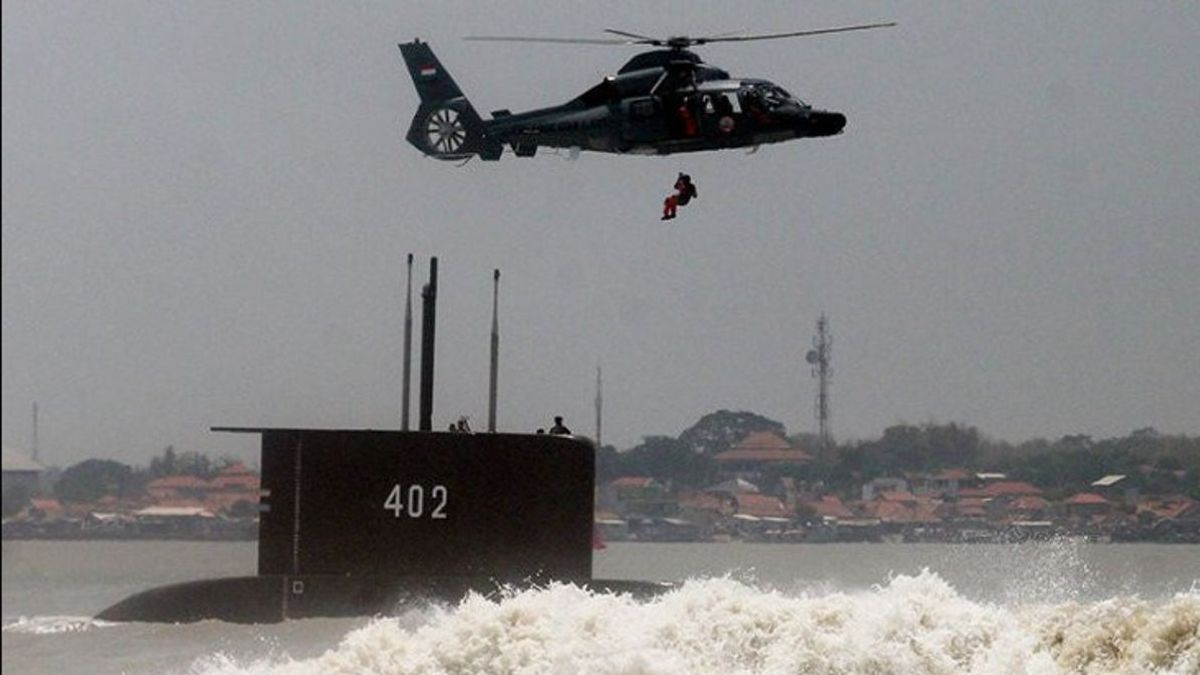JAKARTA - The search for KRI Nanggala-402 continues. Maximum efforts were made to save the 53 crew of the submarine belonging to the Indonesian Navy. There is one fundamental reason why this search is difficult. Like submarines in general, the KRI Nanggala-402 is designed to hide. Then how is the search carried out?
In the latest development, KSAL Admiral TNI Yudo Margono reported the finding of fragments of components of the KRI Nanggala-402. However, Yudo confirmed that the component was separated from the submarine not because of the explosion, but by a crack. The cracks, said Yudo, occurred due to pressure as the submarine reached certain depths.
"Rift. Not an explosion. If the explosion must have been completely destroyed. Due to gradual cracking in certain sections. When he (KRI Nanggala-402) descended, there were phases, starting from a depth of 300-500. There are phases of cracks because if the explosion is sure to be heard. So it's not an explosion but more of a crack, ”Yudo told a press conference, Saturday afternoon, April 24.

Yudo does not want speculation. What is clear is the search will be maximal. The TNI, so far, has deployed 21 KRIs, most of which have sonar detection power. It is important to map the situation at the depths and the seabed.
Apart from TNI ships, assistance also came from the National Police, BNPT, and BNPB. Friendly countries also sent assistance, including the Singapore Navy who sent the MV Swift Rescue evacuation ship and the United States which brought in the submarine hunter plane, the P-8 Poseidon.
Submarines are designed to hide
The former Commander of the Marine Corps, Lieutenant General Mar TNI (Ret) Nono Sampono, gave his views regarding this incident. Nono said one of the most fundamental difficulties in the search process was that submarines, including the KRI Nanggala-402, were designed hidden to carry out silent operations.
"Even if he's active, it's hard to detect. Especially in a problematic situation," said Nono in an interview at Kompas Petang, Friday night, April 23.
Submarines are designed to be stealth and undetectable. Even when the KRI Nanggala-402 dived. Tracking it is unlikely. Even at close range, with sonar tracking, tracking remains difficult.
KRI Nanggala may have a planned course in training. But the exact coordinates of their whereabouts were not monitored. The last point that the searchers on the ground knew were the coordinates when they reported their permission to fire a torpedo, Wednesday, April 21 at 03.00 WITA.
How to track anti-trace objectsQuoting The Conversation, Saturday afternoon, April 24, in general, the first indication of the disappearance of a submarine is the interruption of periodic reports from the crew. The world's navies have a planned procedure for checking and initiating a search if a submarine shows this indication.
At the earliest, the authorities will change the procedure from the original 'SUBLOOK' - submarine search - to 'SUBMISS' or the submarine is lost. After that, in a situation where there is no hope or evidence of an accident is found, the procedure will be changed to 'SUBSUNK'. Until now, the status of KRI Nanggala-402 is SUBMISS.
What is certain about the search for the missing submarine is uncertainty. No matter how sophisticated the tools are, there is always room for uncertainty.

And it could be huge. The faster a submarine moves and the longer it is since the last contact, the bigger the space for uncertainty.
There is one procedure a submarine crew can perform to mark their position: removing the indicator buoy. However, there are still possibilities that make the crew unable to carry out the buoy release procedure.
In shallow water, the buoys can remain attached to the sub. However, in deep water, the buoy floats freely.
This means that even when the search team finds the buoy, they still have to calculate the sub's exact position, amid various factors related to wind and water currents. This method is also used when debris or fuel marks are found at sea level.
Constraints in the depth of the seaThe latest development states that KRI Nanggala-402 was found at a depth of 850 meters, with coordinates approximately 60 miles north of Bali waters. KSAL Laksmana TNI Yudo Margono said the search was focused on points related to the latest findings.
Learning from the sinking of the Argentine submarine, San Juan in 2017, the depth of the sea is not an easy terrain. Absolutely not. Quoted from the BBC, the Search for San Juan takes a year.
The search was carried out in detail on the bottom of the water using high frequency sonar and underwater cameras. And the search for San Juan at that time was more measurable because of the seismic vibration data that occurred when the submarine exploded under water.
Even if we take into account the miracle: KRI Nanggala-402 is still intact. Nonetheless. It is unlikely that the rescue equipment will reach the KRI Nanggala-402 crew at a depth of 850 meters.
* Read other information about KRI NANGGALA-402 or read other interesting articles from Aditya Fajar, Rizky Adytia Pramana, also Yudhistira Mahabharata.
BERNAS OthersThe English, Chinese, Japanese, Arabic, and French versions are automatically generated by the AI. So there may still be inaccuracies in translating, please always see Indonesian as our main language. (system supported by DigitalSiber.id)








